
Proctor is a town in Rutland County, Vermont, United States. The population was 1,763 at the 2020 census. Proctor is home to the Vermont Marble Museum and Wilson Castle.

Redfield Proctor was a U.S. politician of the Republican Party. He served as the 37th governor of Vermont from 1878 to 1880, as Secretary of War from 1889 to 1891, and as a United States Senator for Vermont from 1891 to 1908.
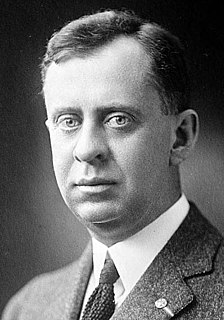
Redfield Proctor Jr. was an American business executive and politician who served as the 59th governor of Vermont from 1923 to 1925.

Frank C. Partridge was an American attorney, diplomat, and business executive from Vermont. A Republican, he served briefly in the United States Senate, appointed to fill the vacancy left by the death of Frank L. Greene.
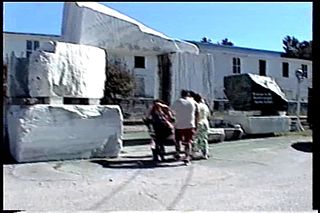
The Vermont Marble Museum or Vermont Marble Exhibit is a museum commemorating the contributions of Vermont marble and the Vermont Marble Company, located in Proctor, Vermont, United States. The museum is located in a wing of one of the former Vermont Marble Company buildings.
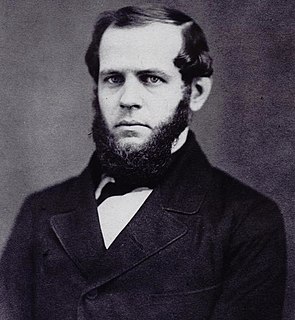
John Boardman Page was an American businessman and politician from Vermont. He served as Vermont State Treasurer from 1860 to 1866 and was the 30th governor of Vermont from 1867 to 1869.

The Ira C. Allen Mansion, now the Marble Mansion Inn, is a historic property on the Green in Fair Haven, Vermont, United States. It is a contributing property to the Fair Haven Green Historic District, which was listed on the National Register of Historic Places in 1980 as the Allen-Castle House.

Abram William Foote was a Vermont businessman and politician. He served as the 53rd lieutenant governor of Vermont from 1921 to 1923.

Horace Henry Baxter was a Vermont businessman who served as Adjutant General of Vermont at the start of the American Civil War and President of the New York Central Railroad.

The Thomas Russell Hubbard House is a historic house at 220 Myrtle Street in Manchester, New Hampshire. The 2½-story wood-frame house was built in 1867, by a farmer turned businessman and a prosperous owner of a factory and lumberyard, and is an exceptionally elaborate Italianate villa. It was listed on the National Register of Historic Places in 1988.

Clementwood is a historic estate in Rutland, Vermont. It is now a part of the campus of the College of St. Joseph on the city's west side. The estate was developed in the 1850s by Charles Clement, a leading local businessman whose family fortune was made in the locally prominent marble industry. The house is a notably fine example of Italianate architecture; it currently houses the administrative offices of the college. The estate was listed on National Register of Historic Places in 1980.

The Danby Village Historic District encompasses much of the town center of Danby, Vermont. It is centered on a stretch of Main Street, roughly between Depot Street and Brook Road. The village has a cohesive collection of mid-19th century architecture, mostly residential, with a modest number of later additions. The district was listed on the National Register of Historic Places in 1983.

The Fair Haven Green Historic District encompasses the village green of Fair Haven, Vermont, and the heterogeneous collection of civic, commercial, and residential buildings that line it and adjacent streets. The area was developed mainly following the arrival of the railroad in 1848 and the subsequent expansion of marble and slate quarries in the area. The district was listed on the National Register of Historic Places in 1980.

The Kazon Building is a historic industrial building at 50 Marble Street in West Rutland, Vermont. Built in 1929, it is a well-preserved local example of a purpose-built garment factory, built by Louis Kazon, a leading local businessman in that industry. It was listed on the National Register of Historic Places in 2004. It has been converted to mixed office and residential use.

Linden Terrace is a historic house at 191 Grove Street in Rutland, Vermont. Built in 1912 as a summer estate for a prominent businessman, it is one of the finer surviving summer houses of the period in southern Vermont. It was listed on the National Register of Historic Places in 2007. It now houses senior and assisted living apartments.

The Marble Bridge, formally known as the Fletcher D. Proctor Memorial Bridge, carries Main Street across Otter Creek in the center of Proctor, Vermont. Built in 1915 and widened in 1935-36, it is a well-preserved example of early concrete bridge construction, and is decoratively faced in local marble. The bridge was listed on the National Register of Historic Places in 1991.

The Marble Street Historic District encompasses what was once the principal business district of West Rutland, Vermont. Centered on Marble Street between Thrall Avenue and Smith Place, this area was the town's economic hub during the years when the local marble quarries dominated the local economy. The area has also been bypassed as a transportation route, resulting in the preservation of a number of period commercial buildings. The district was listed on the National Register of Historic Places in 1990.

The Rutland Courthouse Historic District encompasses an architecturally cohesive area of civic and residential buildings in Rutland, Vermont. Roughly bounded by Court, Washington, South Main, and West Streets, the district was principally developed between 1850 and 1875, and includes a number of prominent municipal and county buildings, including the Rutland County courthouse, the Rutland Free Library, and the Grace Congregational United Church. The district was listed on the National Register of Historic Places in 1976.
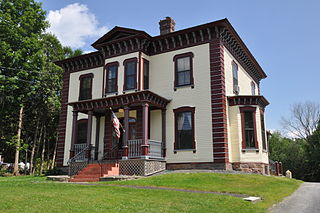
The Colby Mansion is a historic house on Vermont Route 100 in Waterbury, Vermont. It was built in 1870 by George J. Colby, a proponent of ideas of house construction for healthy living, and exhibits all of the major features of his published works. It was listed on the National Register of Historic Places in 1979.
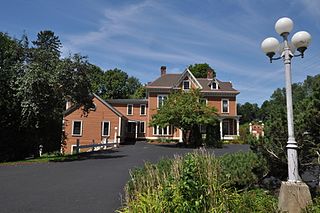
The Franklin Fairbanks House is a historic house at 357 Western Avenue in St. Johnsbury, Vermont. It was built in 1860 for Franklin Fairbanks, a prominent local businessman and philanthropist. The house is an excellent example of Italianate architecture, and was listed on the National Register of Historic Places in 1980. It now houses professional offices.























